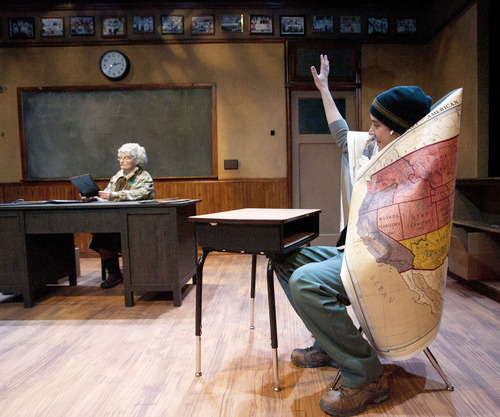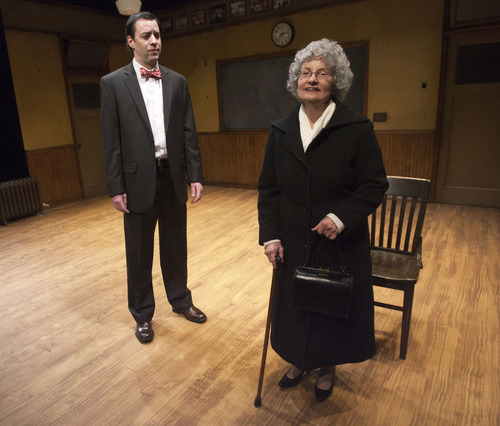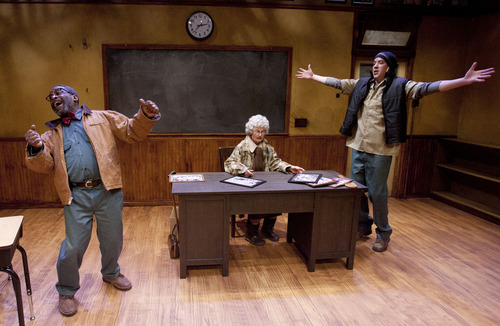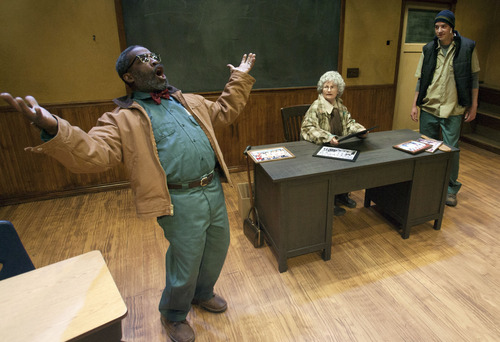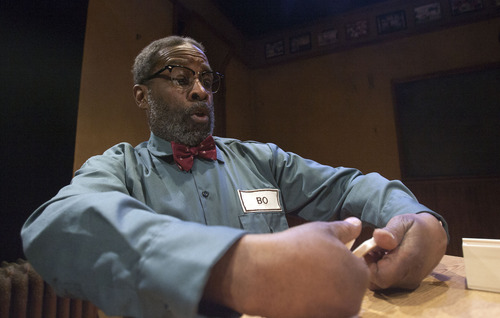This is an archived article that was published on sltrib.com in 2013, and information in the article may be outdated. It is provided only for personal research purposes and may not be reprinted.
When I was growing up in Connecticut, I considered my father a tolerant man. He was a doctor, and he treated all his patients with compassionate concern regardless of their race and ethnicity or even their ability to pay.
Yet his vocabulary was intermittently colored by racial and ethnic slurs that — if brought to his attention — he would have denied reflected prejudice. They merely revealed attitudes that had become so ingrained over the years that he was unaware of them.
These habitual, unconscious ways of dealing with race are at the heart of "How to Make a Rope Swing," making its world premiere at Salt Lake Acting Company. But what is most refreshing about Shawn Fisher's remarkably well-written play is that they represent only a fraction of the complexity of the characters he has created.
When Bo Wells and Delores Wright are stranded in a snowstorm in Oakbranch Elementary School where both worked for more than 50 years, they are forced to really relate to each other for the first time. As Bo tells his young assistant, Mick, "We saw each other for most of our lives, but we are practically strangers."
The old school is about to be demolished, and Bo, its African-American janitor, and Delores, its retired white principal and former teacher, are meeting to discuss a name for the new school, which Delores is financing. Both are haunted by a racially charged incident involving Bo's wife, Marian, the school's first black teacher, that happened years earlier at the giant oak tree that gave the town its name and that dominates local life. The tree — with its rope swings symbolizing both childish joy and impending danger — becomes an unseen fourth character in the play.
As Bo and Delores interact, their old, dismissive ways of dealing with each other dissolve, and a new understanding and acceptance emerge. And when they finally confront the reality of what occurred years before, it becomes apparent how much their lives and attitudes were impacted, even controlled, by the racial prejudice of their rural New Jersey community. As Delores says, "There was a line back then that could not be crossed."
It is hard to imagine more moving, truly human portrayals of these two characters than Jayne Luke and Glenn Turner deliver. Luke has an amazing ability to give abrasive characters softer edges; she subtly peels away Delores' authoritative defenses to expose the caring woman dedicated to "rescuing the minds of young people." Turner laces Bo's self-confident bluster and bravado with flashes of the bitterness and anger felt by someone who has had to learn to live with discrimination. His Bo has a zest for life that is unquenchable.
Even Lucas Bybee's Mick has unexpected depth. Underneath his affable, hasn't-got-a-clue surface lie sensitivity and genuine concern. Adrianne Moore's intuitive direction unobtrusively tunes into the emotional ebbs and flows of Fisher's writing.
Keven Myhre's dingy schoolroom set bears the marks of vanished pictures on its walls. Jesse Portillo's lighting realistically captures changing circumstances, and K.L. Alberts' costumes pinpoint the personalities of their wearers.
"How to Make a Rope Swing" is an indelible portrait of a time and place and the people who both shaped and were shaped by it. And its complicated, conflicted characters reveal that we all harbor hidden biases that cannot avoid influencing our lives. —
Review: 'How to Make a Rope Swing'
Bottom line: Fully realized, emotionally rich performances breathe life into Shawn Fisher's beautifully crafted play
When • Reviewed Feb. 8; 7:30 p.m., Wednesday through Saturday; 1 p.m. and 6 p.m., Sunday; through March 3
Where • Salt Lake Acting Company, 168 W. 500 North, Salt Lake City
Tickets • $23 to $42. Call 363-7522 or visit http://www.saltlakeactingcompany.org for information
Running time • Two and a quarter hours (including an intermission)


